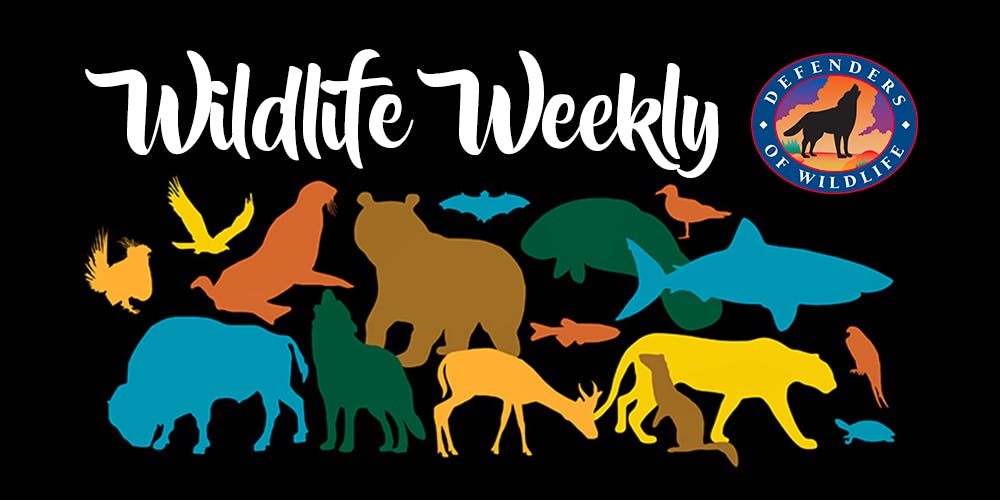Your weekly roundup of wildlife news from across the country

After a six-year study of Southern Resident orcas, biologist Samuel Wasser and his colleagues found that an alarming near 70 percent of the animals studied suffered failed pregnancies. The researchers point to two possible causes for this nightmare situation: dwindling Chinook salmon runs in the Columbia Basin and dangerously high levels of pollution in these salmon. http://dfnd.us/2jKpN2o
California motorists reminded to #WatchOutForWildlife: http://dfnd.us/2w5rLvP
The Trump administration may strip protections from 10 national monuments: http://dfnd.us/2fvdKRO
Partnership works to keep the bears out of the corn in Montana’s Mission Valley: http://dfnd.us/2xOdUyO
Alaska under threat: The administration and certain members of Congress are determined to put profits above the health and future of wildlife and wild places and their sights are set on America’s Last Frontier: http://dfnd.us/2jOjef3

In Washington:

The Northwest program staff have talked to folks all over Washington state about the potential of restoring grizzly bears to the North Cascades. This time, we got the honor presenting in one of the most beautiful and remote areas of the North Cascades: Ross Lake National Recreation Area. As part of a collaboration with the local chapter of Latino Outdoors, we were invited to join their inaugural backpacking trip to demonstrate techniques for hiking in bear country using our Play Smart guide. Vanessa Lopez is pictured above answering questions while demonstrating the ideal leg position (spread wide) in the event of a grizzly bear encounter. If a grizzly bear is not thwarted by your noise or bear spray and approaches closer than 20 feet, laydown on the ground and play dead with your legs spread to create a solid foundation. You should also cover your neck and head area with your hands (not shown). Over water breaks and meals, we got to the facts about the proper behaviors and tips for avoiding bears proactively and what to do if you see one. We will admit that the bear spray demonstration using an inert canister was too fun to be called work! We left the trail as close friends with a new sense of shared responsibility for helping bears stay wild.
In Colorado: 
At the Pathways 2017: Futures conference in Estes Park, Colorado, Defenders’ Senior Representative Northwest Program, Suzanne Stone, gives a presentation on adaptive nonlethal strategies for reducing wolf-sheep conflict in Idaho. She also chaired a panel on Restoring Wolves to Colorado: Lessons from the Northern Rockies. Panelists included Tom Miner Basin Project’s Hilary Anderson, Idaho’s Blaine County Commissioner Larry Schoen, Dr. Stewart Breck from the USDA National Wildlife Research Center and wolf conflict social scientist Dr. Jeremy Bruskotter. The Pathways 2017 conference focused on exploring methods of integrating human dimensions into fisheries and wildlife management around the world.
In New Mexico:

Defenders of Wildlife is participating in a collaborative forest habitat restoration project in New Mexico. Recently, we joined our partners on a field trip to restored ponderosa pine forests in northern New Mexico, made possible through the Forest Service Collaborative Forest Restoration Program. Activities include small tree thinning (<9″ in diameter), raking needles away from larger trees to protect them from fire, monitoring conditions before and after for Abert’s squirrel as well as prescribed burning. The small diameter wood is split and donated to low-income families for domestic use. The goal of the project is to prepare these fire-dependent forests for the reintroduction of natural fire and provide jobs and income to rural communities.



